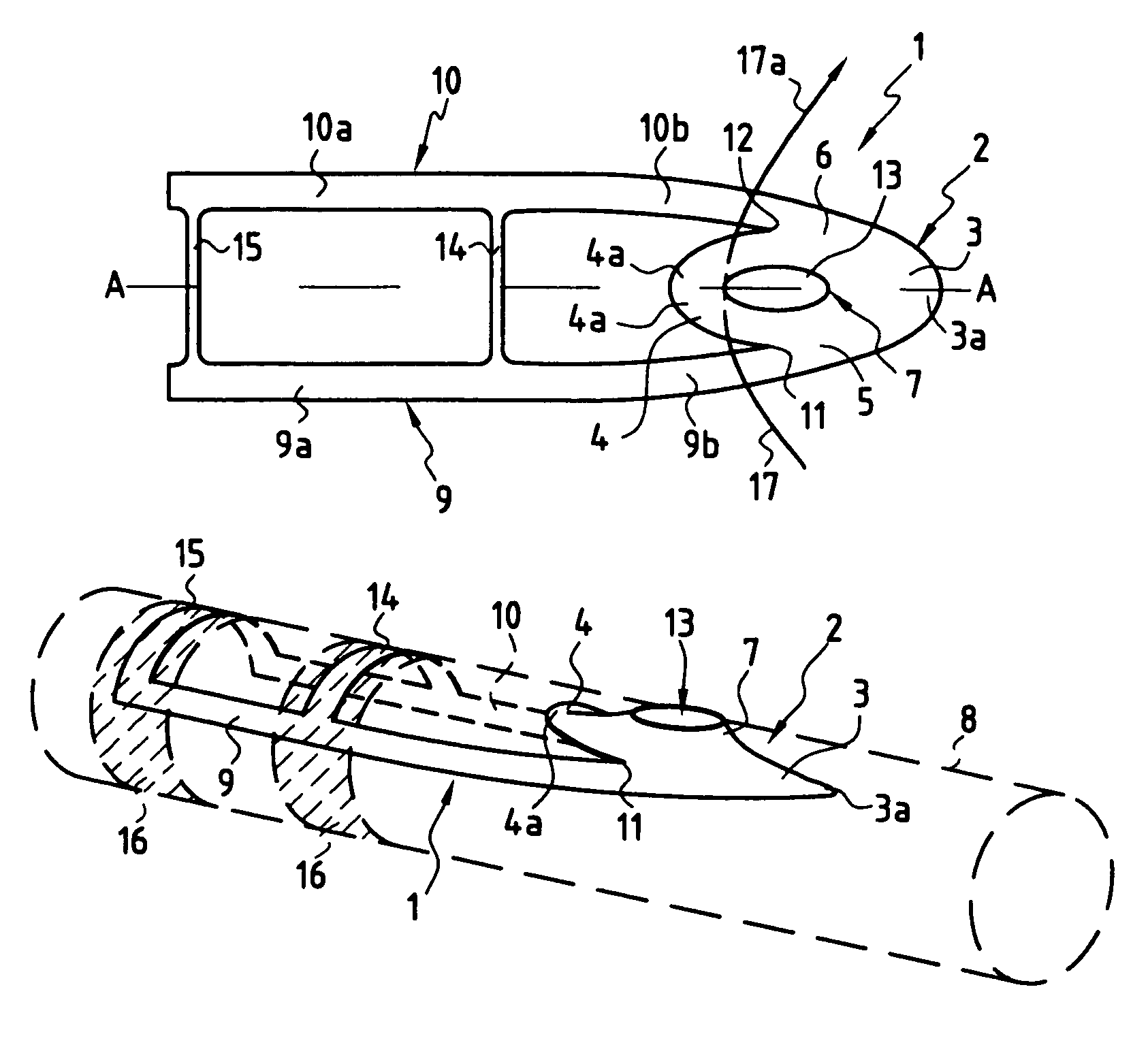Fishing accessory, in particular a line cutter
a line cutter and accessory technology, applied in fishing, other angling devices, animal husbandry, etc., can solve the problems of inconvenient use, inconvenient manufacture, and inability to meet the needs of users, so as to avoid any deformation of jamming and cutting zones, improve the retention of the line cutter, and limit the ability to slide.
- Summary
- Abstract
- Description
- Claims
- Application Information
AI Technical Summary
Benefits of technology
Problems solved by technology
Method used
Image
Examples
first embodiment
[0017]FIGS. 1 and 2 show the accessory 1 that is made by cutting out and stamping a thin metal sheet, e.g. of stainless steel and of the type having a thickness of 0.2 millimeters (mm). The stamping that takes place after cutting out serves to give the various portions constituting accessory 1 their three-dimensional shape.
[0018]More precisely, the accessory comprises firstly a main body 2 which is generally oval in overall shape, having a front portion 3, a rear portion 4, and two side portions 5 and 6, which portions surround a central portion 7. The main body 2 and also the accessory as a whole in this first embodiment, are symmetrical about a longitudinal plane A-A which, when the accessory 1 is put into place on the body 8 of the fishing rod, also corresponds to the longitudinal plane of said body.
[0019]The terms “front” and “rear” are used relative to the direction taken up by the accessory when it is in place on the body 8 of the fishing rod.
[0020]The accessory 1 also has two...
second embodiment
[0037]The second embodiment described below and shown in FIGS. 3 and 4 is more particularly adapted to smooth lines, in particular of the monofilament type, having a surface state that is more slippery and for which jamming requires contact over an area.
[0038]In this second embodiment, the accessory 20 differs from the accessory 1 of the first embodiment solely in the configuration of the jamming zone 21 which is now constituted by a zone extending between one of the longitudinal prongs 9 and a flap 22.
[0039]When the metal plate constituting the accessory 20 is cut out, a flap 22 is formed that constitutes a kind of projection from the curved portion 9b of the longitudinal prong 9 where it joins the side portion 5 of the main body 2.
[0040]As can be seen clearly in FIG. 3, the flap 22 has a front portion 22a which is thus connected to the side prong 9, and a rear portion 22b which is rectilinear and which is immediately adjacent to the longitudinal prong 9.
[0041]In order to make the ...
third embodiment
[0043]The third embodiment shown in FIG. 5 differs from the second only in the location of the flap 24. When cutting out the metal plate constituting the accessory 25, the flap 24 is constituted by a projection from a side portion of the main body towards the inside of the hole 26. As can be seen in FIG. 5, the flap 24 is connected to the side portion 28 via a fold line 24a.
[0044]To make the jamming zone, the metal plate is folded about the fold line 24a so as to bring said flap 24 down onto the top face of the longitudinal prong 29.
PUM
 Login to View More
Login to View More Abstract
Description
Claims
Application Information
 Login to View More
Login to View More - R&D
- Intellectual Property
- Life Sciences
- Materials
- Tech Scout
- Unparalleled Data Quality
- Higher Quality Content
- 60% Fewer Hallucinations
Browse by: Latest US Patents, China's latest patents, Technical Efficacy Thesaurus, Application Domain, Technology Topic, Popular Technical Reports.
© 2025 PatSnap. All rights reserved.Legal|Privacy policy|Modern Slavery Act Transparency Statement|Sitemap|About US| Contact US: help@patsnap.com


